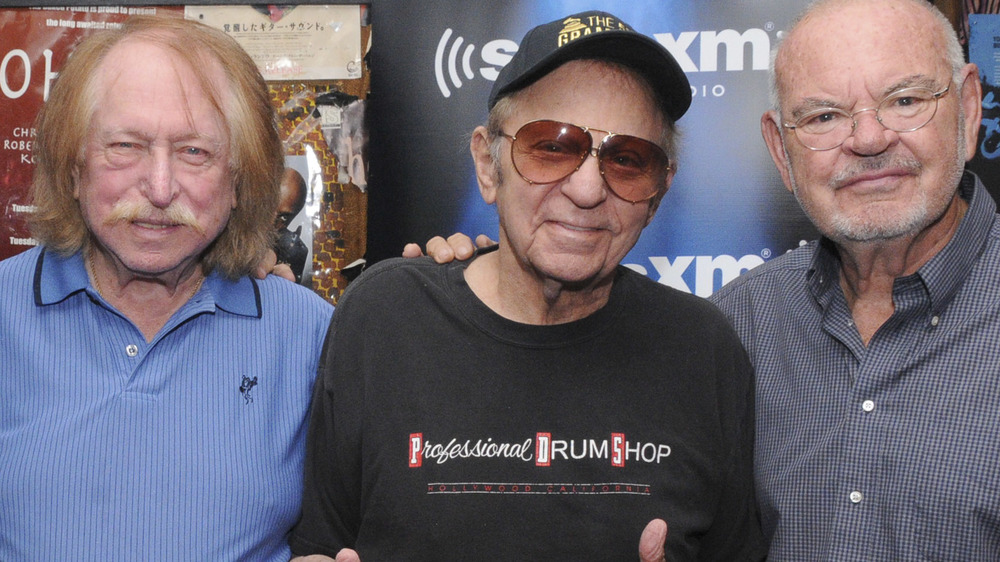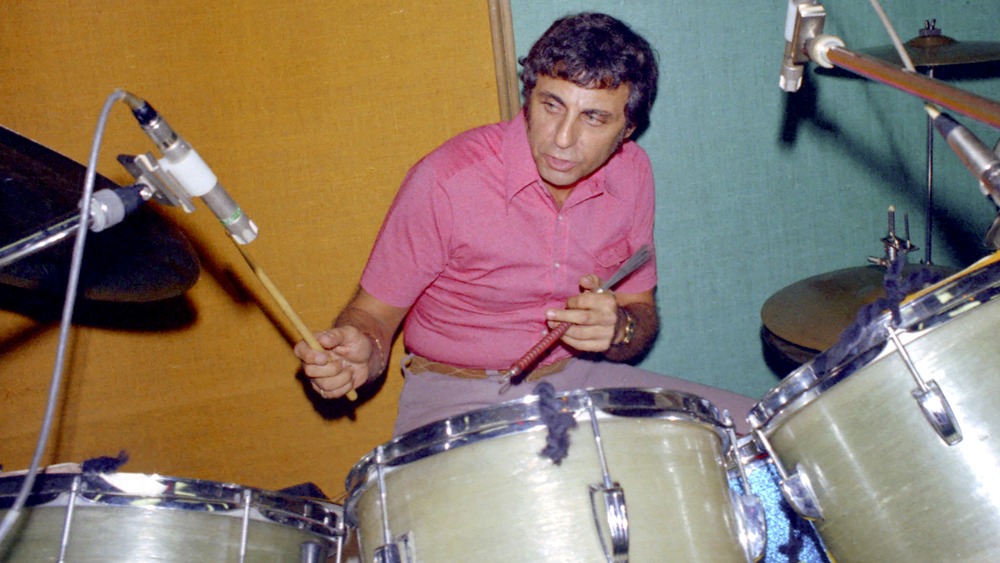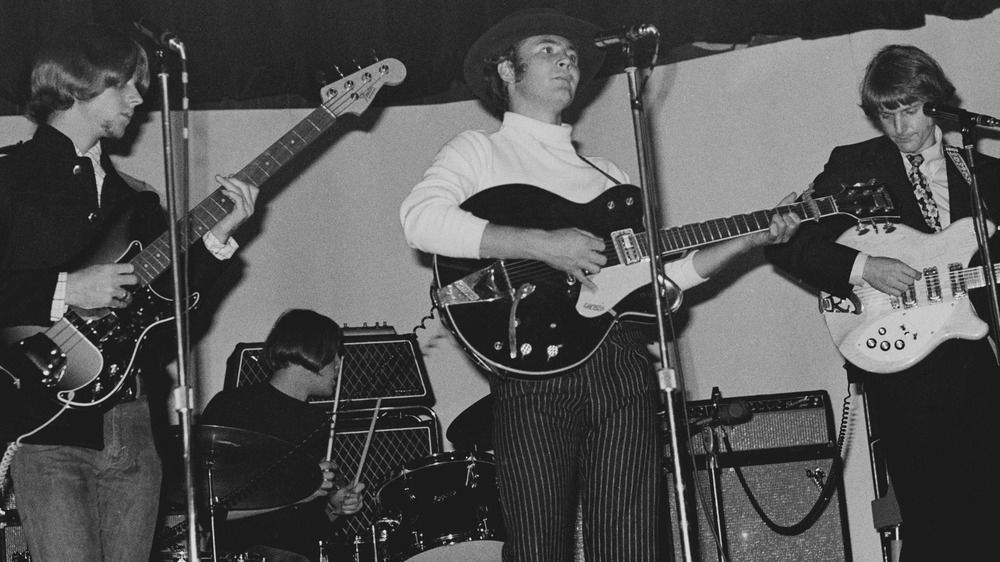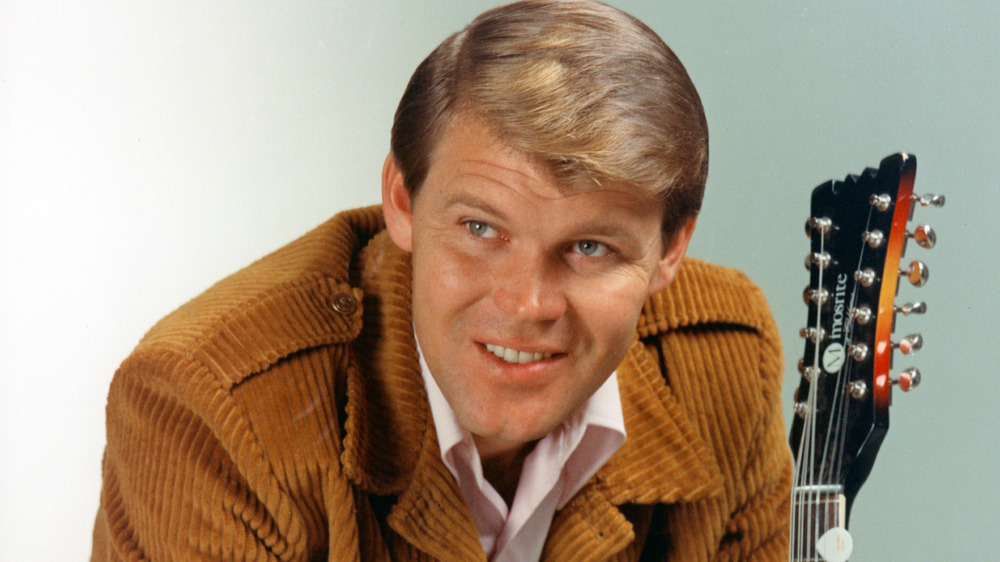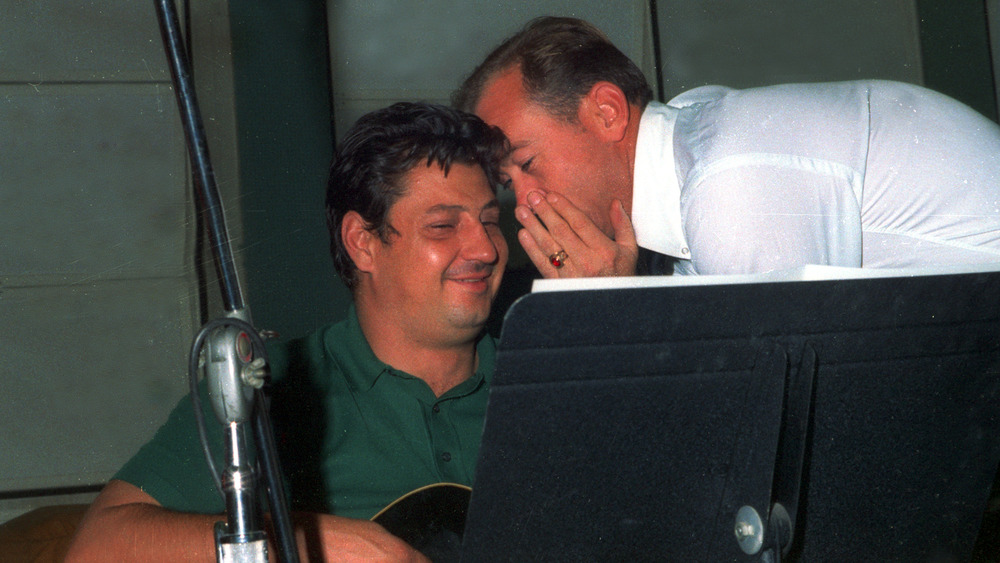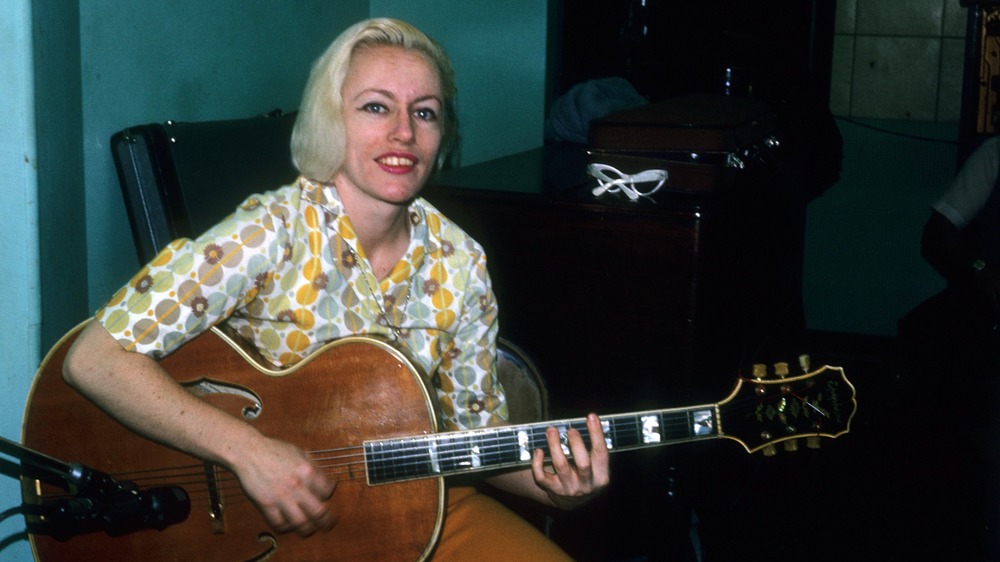The Untold Truth Of The Wrecking Crew
If you were a record-buying consumer in the 1960s or 1970s — or even a present-day fan listening to the music from your parents' or grandparents' time — you might have been surprised to find out that many of the people on the album covers from those decades had almost nothing to do with the making of the music. While they did indeed know how to play their instruments, and would play them competently in concert, these musicians were generally relegated to singing background vocals — or probably goofing around the studio while the lead singer recorded their vocal tracks.
Nowadays, it isn't as common anymore for supporting band members to have so little involvement in the making of an album. But back in the aforementioned decades, a loosely-knit group of studio musicians known as the Wrecking Crew played on many a future classic. For instance, the Beach Boys frequently turned to these hired hands to help record some of their biggest hits. And in probably the most infamous example of the Crew subbing for the credited musicians, they played the instruments on the Monkees' first two albums, further underscoring the latter group's reputation as the "Pre-fab Four."
Being that they were mostly anonymous players behind the scenes back in the day, there are still a lot of details about the Wrecking Crew that you might not know yet. With that said, here's a look into their untold truth.
Drummer Hal Blaine came up with the Wrecking Crew's name
Although the peak of their output was during the 1960s and 1970s, it was only when Wrecking Crew drummer Hal Blaine published his memoir in 1990 that people got to know them by their nickname. As noted by Udiscover Music, the group was informally known as "The Clique" and "The First Call Gang" before they adopted the "Wrecking Crew" moniker. This, according to Blaine, was a reference to how older studio musicians were concerned that the drummer and his young colleagues were going to "wreck" the music industry by focusing on rock and pop music. (Oh, how times have changed since then.)
In an interview with journalist Richie Unterberger, Wrecking Crew bassist and guitarist Carol Kaye — who was one of the few female session musicians of her era – had her own recollection of the group's name, explaining that they were mostly known as just "studio musicians." She did, however, hint that there were certain people in this group who were referred to as "The Clique."
The Byrds' drummer resented the Wrecking Crew's involvement in Mr. Tambourine Man
The Byrds are not one of those '60s bands that you would normally associate with studio musicians. After all, Jim (later known as Roger) McGuinn, David Crosby, Gene Clark, Chris Hillman, and Michael Clarke were mostly established instrumentalists in the folk rock scene before they joined forces in 1964. However, they did work with the Wrecking Crew on one of their first, and biggest, hits: their 1965 cover of Bob Dylan's "Mr. Tambourine Man."
Speaking to journalist Marc Myers in an interview published on his JazzWax blog, Hal Blaine looked back on the recording sessions for "Mr. Tambourine Man." He recalled that he and his fellow hired hands did most of the work on the future hit single, with McGuinn being the only member of the Byrds who played his own instrument, the 12-string guitar that can be heard most clearly on the song's iconic intro. Apparently, it wasn't a very popular move, especially for Clarke, whom Blaine described as "probably the only drummer in any band who resented me recording and helping to make their first single a hit."
"None of this takes anything away from the Byrds," Blaine continued, explaining why producer Terry Melcher recruited the Wrecking Crew. "They had a great new sound, their music was special, they sang terrific harmonies and changed the direction of rock. But back in '65, a single had to be tight and jump out of the radio with a crisp pop if it stood a chance of becoming a hit."
This country legend was once part of the Wrecking Crew
When we think of Wrecking Crew members who became bigger names as solo artists or band members, Leon Russell and Bread guitarist Larry Knechtel usually come to mind. A New Orleans-born pianist named Mac Rebennack earned much greater fame as Dr. John. Country legend Glen Campbell was also part of this unsung group of musicians for a few years, and as Denny Tedesco — son of Wrecking Crew guitarist Tommy Tedesco — recalled, Campbell's former colleagues couldn't have been prouder of him when he became a successful solo act.
"He might not be able to read a note of music, but they said he had ears like an elephant. He knew when to play and what to play," Tedesco told Best Classic Bands shortly after Campbell's death in August 2017. "When they laid down the tracks they would sometimes ask Glen to put down a demo vocal to see how it sounded."
During his time with the Crew, Campbell played guitar on a number of massive 1960s hits, including the Righteous Brothers' "You've Lost That Lovin' Feelin" and Frank Sinatra's "Strangers in the Night." He also guested on several Beach Boys recordings, and briefly replaced Brian Wilson when a nervous breakdown forced Wilson to retire from touring for several years, reports Taste of Country. Campbell ultimately turned down an offer to join the band on a full-time basis, which turned out to be a wise move, considering how big he became upon going solo and shifting from rock to country music.
The Wrecking Crew's busy, busy schedule
During their peak years, the Wrecking Crew had an extremely busy schedule. They were recording songs for different bands and different record labels, while also meeting with musicians and record executives, and doing even more work on radio or TV commercials in between.
"You leave the house at seven o'clock in the morning, and you're at Universal at nine till noon; now you're at Capitol Records at one, you just got time to get there, then you got a jingle at four, then we're on a date with somebody at eight, then The Beach Boys at midnight, and you do that five days a week ... Jeez, man, you get burned out," Wrecking Crew guitarist Bill Pittman explained.
It's a miracle of sorts that despite that hectic schedule, certain Wrecking Crew members still found enough time to be with their loved ones. As reported by Newsweek, Denny Tedesco began working on his documentary The Wrecking Crew in the mid-1990s when his late father, Tommy (pictured above, seated), was diagnosed with cancer. The outlet further noted that the guitarist was a "good father and husband" despite the fact he worked 90 hours a week — that averages out to more than half of each day.
Here's why the Wrecking Crew was never credited, yet often utilized
Those who bought records back in the swinging '60s typically didn't see anyone else credited on those albums aside from the actual band members themselves. But why weren't the session musicians' names listed on the liner notes?
Take the example of The Association, a band that's best known for romantic ballads such as "Cherish" and "Never My Love," and more uptempo numbers like "Windy" and "Along Comes Mary." As quoted by Newsweek, one of their members gave a rather interesting — and understandable — explanation of why The Wrecking Crew's musicians never got credited on their albums: "We don't want kids to know we didn't play on the record," he said.
A 2019 article from Happy Magazine also explained why the Wrecking Crew was enlisted so often to do ghost recordings for their era's most popular bands. Aside from their ability to seamlessly shift from one genre to another, they were also very fast and technically precise in the studio. And, as Carol Kaye (pictured above) recalled, it helped that all of the Crew's members stayed drug-free, allowing them to "cut a hit album in six hours."
